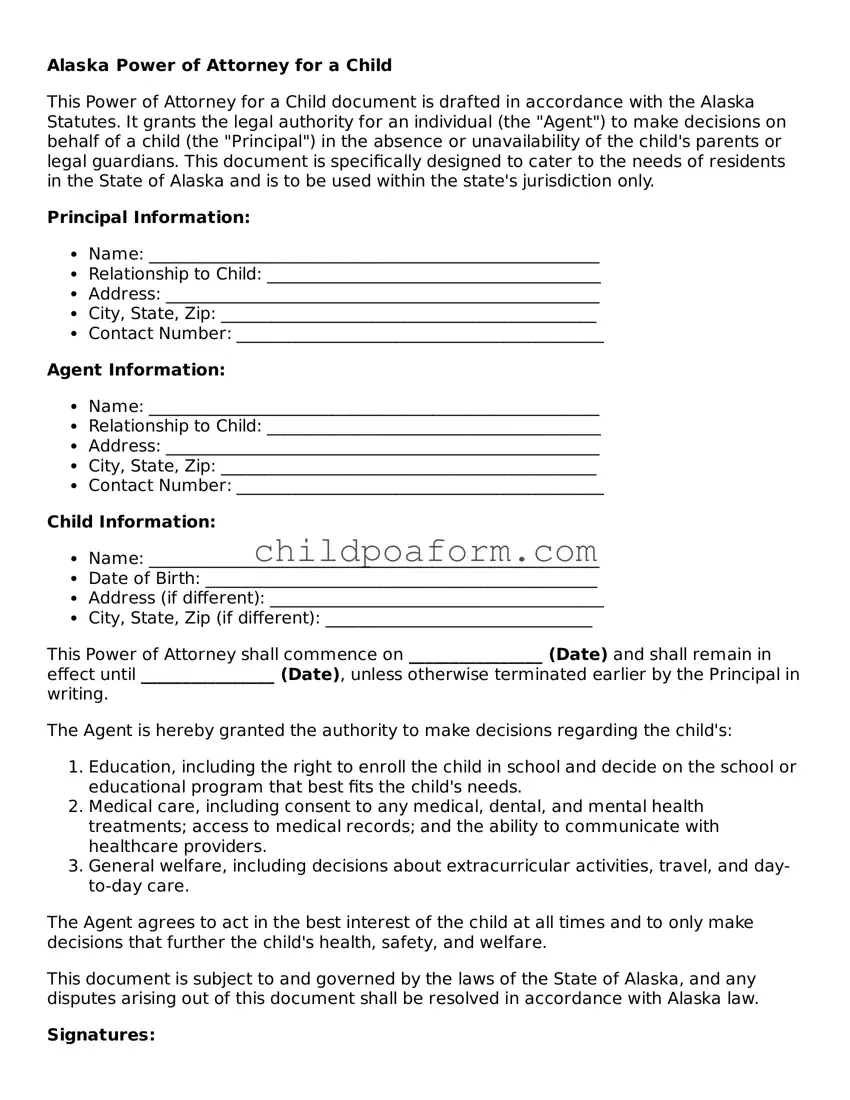Instructions on Utilizing Alaska Power of Attorney for a Child
Filling out the Alaska Power of Attorney for a Child form is an important step for parents or guardians looking to legally assign someone else the authority to make decisions for their child. This can ensure that, in your absence, your child will be taken care of by someone you trust. The process is straightforward, but it demands your careful attention to detail. By following the steps below, you will ensure the form is completed accurately, empowering the designated individual to act in the best interest of your child.
- Start with the child's full legal name at the top of the form, ensuring it matches the name on their birth certificate.
- Enter your full legal name (as the parent or legal guardian) and your relationship to the child.
- Fill in the full legal name of the individual you are granting power of attorney to (the agent), along with their relationship to the child.
- Specify the date when the power of attorney will begin. If you wish for it to start immediately, note the current date.
- Detail the powers you are granting to the agent. Be specific about any limitations or include all areas where the agent will have authority to make decisions in your stead.
- Include any specific instructions or restrictions you want to enforce, such as dietary needs, restrictions on travel, or educational preferences.
- State the duration of the power of attorney. If it's meant to be temporary, specify the end date. Note that in Alaska, a Power of Attorney for a Child can last no longer than one year unless otherwise specified.
- Both the parent or legal guardian and the designated agent must sign the form in the presence of a notary public or two adult witnesses, who must then also sign, attesting to the authenticity of the signatures.
- Make copies of the signed document. Provide the original to the agent, keep a copy for yourself, and consider giving a copy to the child's healthcare provider and school.
By completing the Alaska Power of Attorney for a Child form, you are taking a significant step to ensure the safety and well-being of your child in your absence. It's an act of trust and responsibility towards the person you are entrusting with your child's care. Remember, this document can always be reviewed, and its powers can be revised or revoked by you at any time should your circumstances or preferences change.
